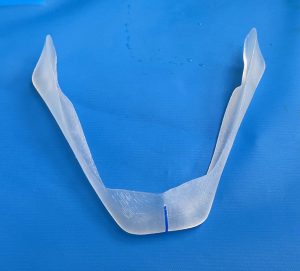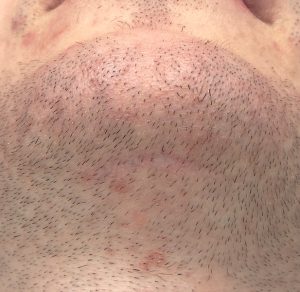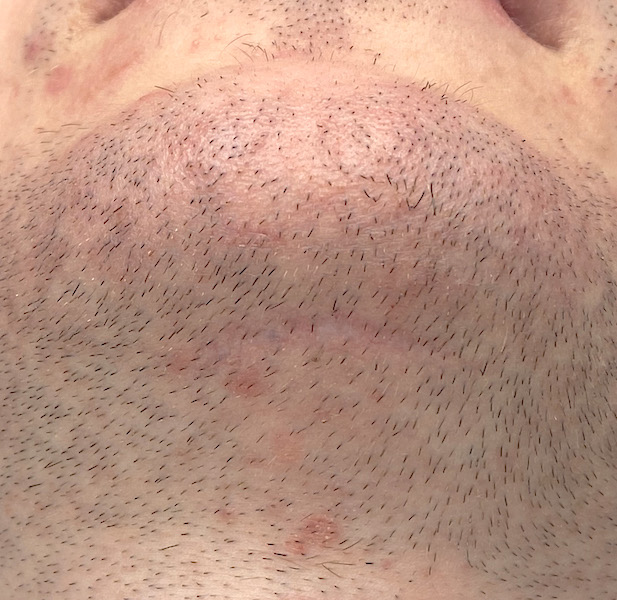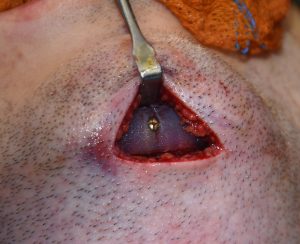
Placing the custom jawline implant in most cases requires a three incisional approach, which in most male includes a submental skin incision to do so. Of the three incisions (including the paired bilateral intraoral vestibular incisions) the submental incision is exposed to the most stress/stretching from introduction of the implant as well as it is the only one of the three incisions that is visible.

In making the submental incision a scalpel is first used to cut through the skin. But once fat and hair follicles are seen dissection is switched to scissors to get to deeper tissues. Only then is electrocautery used is get down to the bone. This avoids thermally injuring the hair follicles which will result in beard hair loss and a wide appearing scar.
In closing the incision it is important to eliminate or limit the use of dermal sutures as this is another mechanism for hair follicle entrapment. The same can be said for subcuticular suture chin closure. A non-locking running suture of 6-0 plain works well and does not require removal later.
In essence with good surgical technique the scar outcome from the submental incision in custom jawline implants can be very similar to that of standard chin implants.
Dr. Barry Eppley
Indianapolis, Indiana




